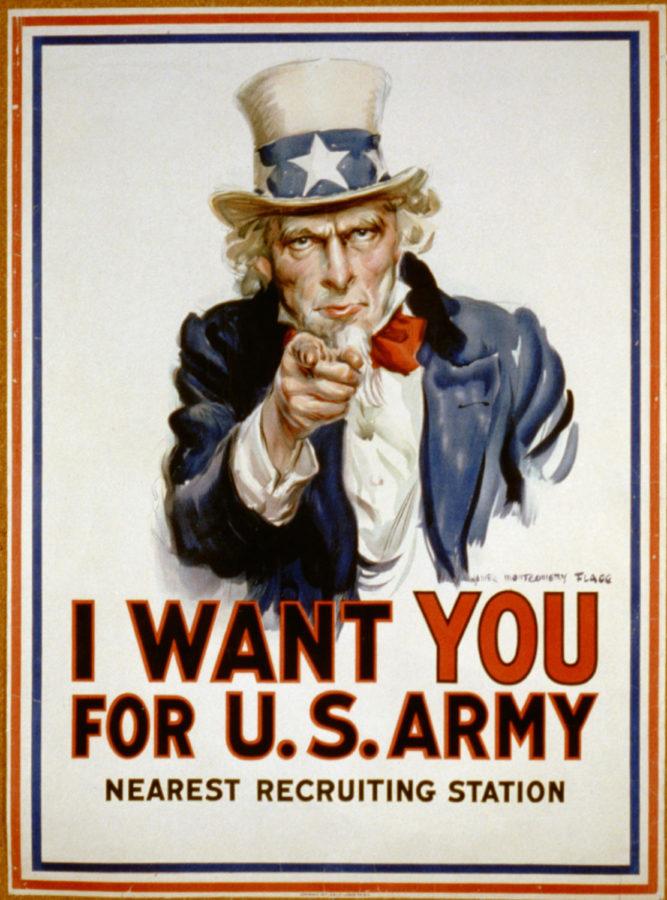Editorial: Selective service is not necessary
Courtesy of Library of Congress
Poster shows Uncle Sam pointing his finger at the viewer in order to recruit soldiers for the American Army during World War I. The printed phrase “Nearest recruiting station” has a blank space below to add the address for enlisting.
February 26, 2019
As the Vietnam War drew to a close, the United States government officially ended the draft on Jan. 27, 1973. To be clear, selective service was and still is a thing.
When men in the United States turn 18, they are required to register for selective service. A draft, on the other hand, is when the military forces men to enlist in older to bolster their numbers. Selective service simply provides a list of all men between the ages of 18 and 25 to draft from.
Four years from now will mark a half century since the United States last used selective service via a draft which brings up the question, should there even be a selective service?
It’s an especially interesting question as a Federal Judge has declared the current system of requiring only men to register as unconstitutional.
The Supreme Court declared the male-only draft as constitutional in 1980 because only men were allowed to serve in combat, the role for which the draft is implemented. In 2013 and 2015 however, the military lifted all restrictions on the basis of sex. Women can now serve in combat roles leading the Federal Judge to declare a male only draft as unconstitutional.
Though the judge isn’t requiring any changes, the declaration is still seen as a win for the men’s rights group who sued.
So now that we’ve gone almost 50 years since the last draft, women may be required to register.
A win for equality? Maybe?
From a logistical standpoint, we’ve been at war in the Middle East since 1991 and not once have we been desperate enough for soldiers to implement a draft. The United States is fortunate to have the numbers of young men and women eager to serve.
We’re also fortunate to have the financial and technological resources at our disposal. What took large numbers of troops to accomplish in the early 1990s can now be accomplished with singular personal and technology.
Wars are fought less and less between soldiers shooting at each other more and more with strategic attacks and unmanned drones.
Bold prediction, the military will never implement another draft again.
The continued nuclearization of allies and enemies has ensured wars will have high stakes. As such, the United States will continue to dedicate the resources needed to protect our interests globally. However, the cold war and U.S. invasions of the Middle East brought about a global change in how wars are fought.
The service of our soldiers and veterans will continue to be cherished and appreciated. But the government has invested heavily in ways to fight wars while minimizing casualties. As such, the draft and selective service have been rendered obsolete.

















